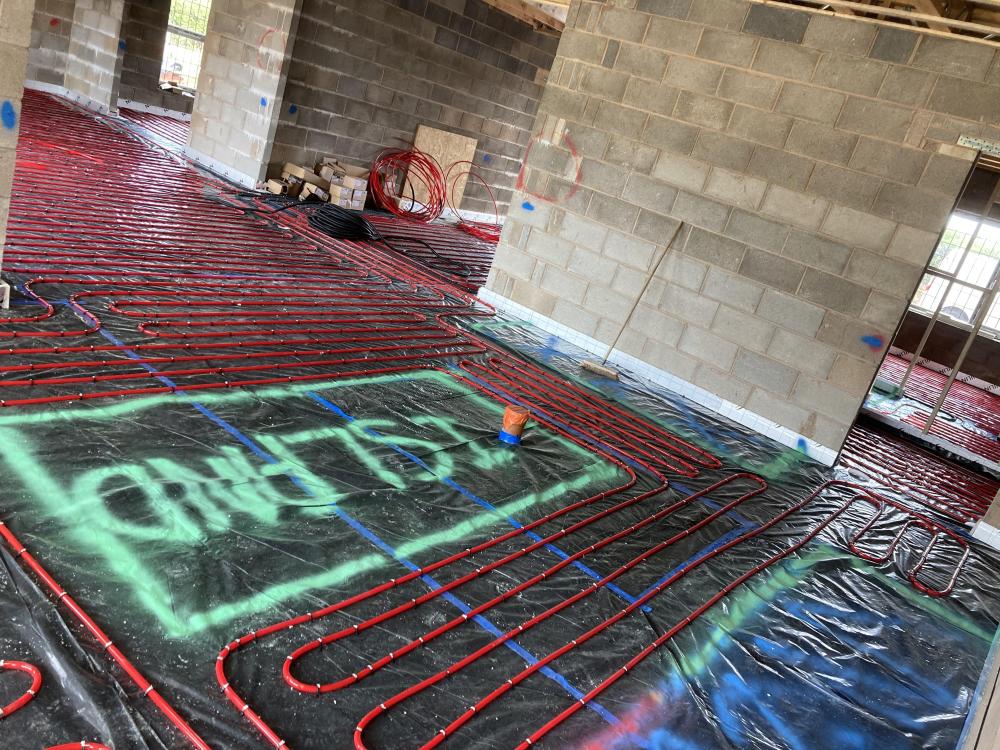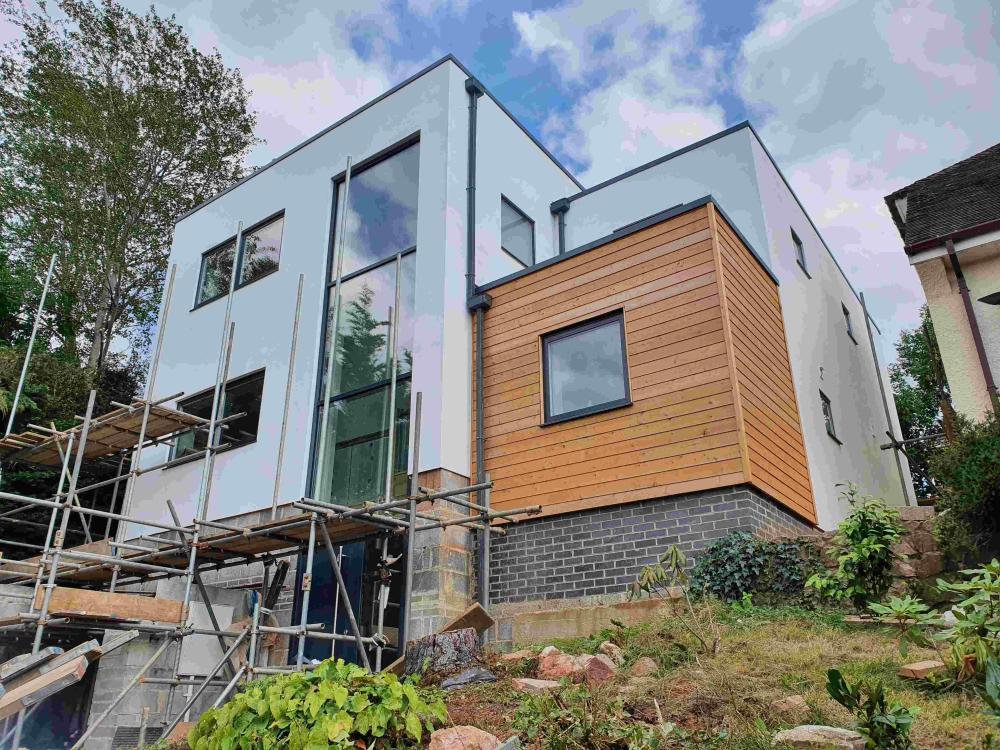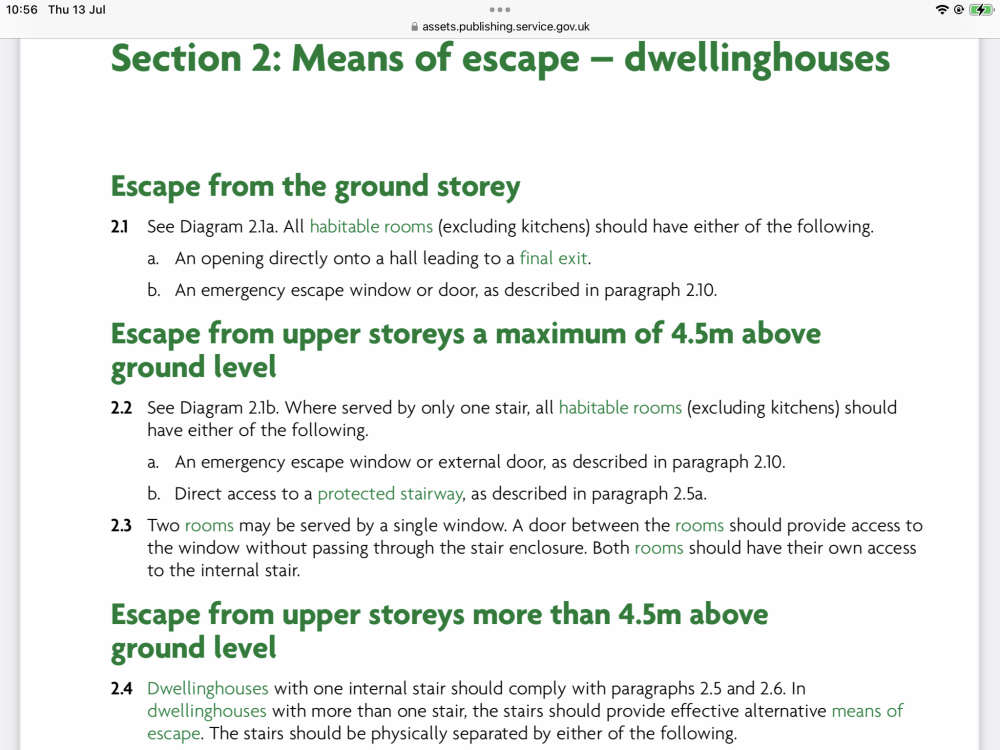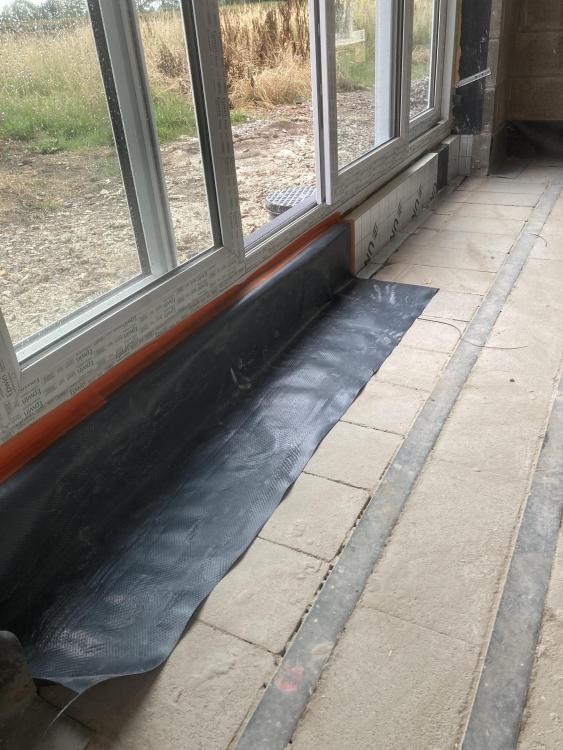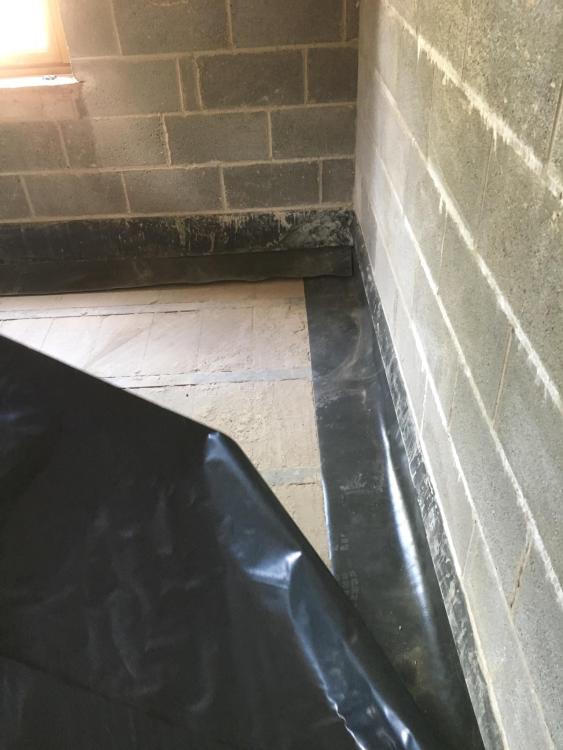Leaderboard
Popular Content
Showing content with the highest reputation on 07/13/23 in all areas
-
aaaaaand relax. I even managed to get the EPDM on today a couple of mins before the heavens opened. The engineer is scheduled to come tomorrow to set the foundations out but may cry off due to the incoming rain. If so he says he will come on Sunday. Digger Tuesday if the warranty company get their shit together. Southbank1-210748-210804.mp45 points
-
4 points
-
You just need to have the section of RB that will take the PB screw, offset from the edge of the joist. You absolutely must avoid screwing through the plasterboard, through the RB, and into the joist If you don't then you'll end up in a proper state. Set the RB so the 'tongue' is in each void.2 points
-
I like the current set up rustic appeal, appreciate its just concrete kerbs but not a fan of the plumb slate thing2 points
-
Maybe they are working from home! On a serious note it’s probably not you, most tradies have had it too good and gotten used to picking and choosing what jobs they work on.2 points
-
As a random sample, MCS cost me maybe £1.5k (vs DIY, less vs non-MCS install) and I've had £400 of export payments over the last six months. I filled the roof as the relative cost was minimal so generate more than I need. The company I used are now charging more, so that may be an exception, but certainly worth it in my case. Flux may disappear overnight as well, they've already reduced export rates in line with import prices which track the price cap.2 points
-
Hi everyone! Thought time to make myself known as I will inevitably be asking some questions shortly. At the start of the year my wife and I found a project house that had the potential to be the 'forever home'. We got the keys last week so we're finally getting started, and whilst she has it all on Instagram I doubt I'm going to get any decent discussions going in the comments on there compared to here. Now, onto the house... it's a 3-bed detached house on half an acre of land, estimated to have been built around 1950s. It's had a couple of extensions during it's life although we are likely to take them off and start again. Heating is an oil boiler, drainage/waste is via a septic tank, windows are old aluminium DG units and the garage is waiting for a decent wind to fall over. The house does have BT FTTP though so it balances out pretty well all things considered... Did you say subsidence?! Yep. Built on clay soil in Lincolnshire when the house was first built they planted trees. A LOT of trees. I don't think it surprised anyone when they all matured and absorbed all the moisture in the ground. In 2012 the house suffered subsidence with cracking in the walls. This was repaired with helifix tie bars and the nearest trees being removed, but no underpinning. A CSA was issued confirming all was well. Fast forward to now, and there are some decent-sized cracks in internal walls which suggest new movement. Structural engineers have been and gone, and they've said the outside of the house looks good with few cracks and no split bricks, the roof trusses are in good condition (free from stress) but they'd have to assume there has been further movement due to the internal cracking. We purchased the house from the previous owner's daughter so we have little historical information to go on aside from what we can find out. What next? We're in this for the long haul, and we're living in the place while we do it up. I know, I know; we're mad but we have no other commitments or responsibilities so now is the time to do it. It's old, it's leaky and it's in need of some TLC. Architect plans are being drawn up, subsidence underpinning companies have been drafted in and hopefully, in a few weeks, we'll have a date for getting that resolved. The plan is to seal up the house as best we can, then go for ASHP/Solar/UFH/MVHR to get as eco-friendly as possible. Current EPC is an F, as in "F**k, that's a bad score" I'll leave that for another post however in case your attention span is as good as mine...1 point
-
I thought that this list would be of benefit to the group, it's a summary of my most recent research on the dMVHR issue... Simultaneous supply and extract: Partel lunos eGo - https://www.partel.co.uk/product/lunos-ego/ Blauberg de-carbon freshpoint - https://www.blauberg.co.uk/en/de-carbon-freshpoint-pro-single-room-heat-recovery-ventilator Ecostream Prana - https://ecostream.org.uk/products/ Mitsubishi Lossnay V100 - https://www.bpcventilation.com/mitsubishi-v100u5-e?gclid=CjwKCAjwwb6lBhBJEiwAbuVUSksRORhtqn2lgkCad84gXTJFrMHPc_UPzfaVmkRKVTfdA-Xm4jVx5RoC-FkQAvD_BwE Reversing (may/may not be installed in pairs/interconnected): Partel lunos e2 - https://www.partel.co.uk/product/lunos-e/ Blauberg Aeris mini/midi, Vento mini/midi - https://www.blauberg.co.uk/en/blauberg-uk-mvhr-heat-recovery-ventilation-range/decentralised-single-room-heat-recovery-ventilation-units VentAxia Vent-Axia Lo-Carbon Heat Save - https://www.vent-axia.com/range/decentralised-mechanical-ventilation-heat-recovery Generic sub £400 units from eBay - https://www.ebay.co.uk/itm/193033436176?mkcid=16&mkevt=1&mkrid=711-127632-2357-0&ssspo=fRODC-NSQ2C&sssrc=2047675&ssuid=E-qQEBUERQS&widget_ver=artemis&media=COPY https://www.ebay.co.uk/itm/404354305089?mkcid=16&mkevt=1&mkrid=711-127632-2357-0&ssspo=rdzqkat2s6i&sssrc=2047675&ssuid=E-qQEBUERQS&var=674284052403&widget_ver=artemis&media=COPY I'm really not sure which units are the best, and what you should buy... But I hope that list is helpful.1 point
-
1 point
-
Yes I think they do but from that value you need to take of the cost of an SE assement. I have surveyed some steel portals.. with a view to extracting extra capacity, say by adding an extension or a mezzanine floor. Have had reasonable results but.. you need to be very careful. You need to get yourself there and examine it in detail. I would be very wary about trying to reuse a concrete frame.. there are not just issues around strength but bar cover. When these things were made there was often no quality assurance.. if you don't know how the thing was cast and how well then how do you justify it will perform? Last man on the job gets the blame! Now if you are an SE make sure you take a micrometer to measure the flange and web thickness as for a while folk were passing off Chinese steel as BS sections. They look the same but the web and flange thickness is thinner and the steel grade who knows? For all.. if you are doing things that require steel box sections for example then there are two fundamental types; hot finished and cold formed. The cold formed tend to be cheaper.. but don't do the job. If you are going to buy something second hand then you need to really do your research.1 point
-
thanks. I was pretty sure it would be ok but always best to ask those that actually know! 👍1 point
-
Yeah, maybe as you're not building in front of the front elevation. Depending on your LPA, you might be able to get informal advice, or just put in some simple plans for pre-app discussion.1 point
-
I’ve fitted these before and can confirm they can be ceiling mounted and ducted away1 point
-
It will do nothing for acoustics But as you say that doesn’t matter It will be fine to do that1 point
-
1 point
-
£7 from screwfix. Put some ptfe tape around the thread on the new one as they have a taper thread, then quick swap, do it live, live dangerously. Skins waterproof.1 point
-
I believe they can be ducted they have a 24v version also. I got mine from eBay for £55.1 point
-
Surely that has just bled down from the motar mix when the coping stones we're put on top. As it is directly in line with the joint above which absorbs most of the water, snow and frost thrown at it. That's why most walls now use a course of creasing tiles, and a row of on side engineering bricks to stop any rain ingres.1 point
-
Someone jointed up the gaps between the ridge tiles at some stage and also pointed up the haunched sides where the ridge tiles meet the roof tiles. As this was a thin skim of mortar a tiny amount has now seperated. Nothing to worry about.1 point
-
Try removing the ripples using a big carborundum stone. If they are very soft then a concrete paving block might suffice. I'm wondering if I have misunderstood. I assumed you meant hiring one oc these big helicopter bladed power floats. They are beasts to handle even in a big area. I'd fear it going over the edge in a small slab. @Canskidust....there shouldn't be any with a good mix that wasn't too wet. There is special stuff to brush on that reacts with any cement that has not hydrated. For a small area though, it is as well to use floor paint.1 point
-
I disagree (I built my passive house entirely out of rustic brick). As an edging to my gravel areas I used bricks laid at 45’ leaning on each other, far better than council kerbs.1 point
-
Usually yes. I grew up in Essex. All borders seem to be brick. The horrible light brick they use there. We have Cornish Hedges down here, and I have spent the last 5 days walking past them. They can look quite good if the right stuff is planted into them. Maybe a minute one of them. I do very much like @Big Jimbo's idea of a moat. The chickens would like that.1 point
-
😂 We did have a proper narrowboat but sold it to fund the landscaping and to get things finally sorted - the hens and ducks used to jump on the boat too but after one hen had a brief dip into the canal they steered clear of the water! The Llangollen canal is of course the nicest canal on the network 😉1 point
-
We have the copyright in that. I am sure, with a bit of thought, something interesting, and easy, could be made around it. The problem with brick is, in my opinion, it looks naff.1 point
-
As you are next to the canal, i think you should have a 1/3rd size canal boat built around it. A 3ft moat all around the outside of the boat, with a plank for the chickens to access the shelter of the tree. Then you could have a couple of ducks in the moat to keep the chickens company. If you think i am being silly, it's because. I like your house. I would like chickens, (and ducks), and i've had loads of canal boat holidays, and love the canals. So basically, i'm jealous. What about a pirate ship, half sunken. Designed in such a way as to be a nightime house for the chickens.1 point
-
For the house, we use Titon HRV units X2. For our garden room dMEV I used Greenwood CV2GIP.1 point
-
1 point
-
It could be a Weeping Hemlock. They look like council kerbs. Not the prettiest edging and they weigh a lot. I would go for it, just ram down 200mm small rubble or type1 for a base and brick on top. Lay it all out dry first to see what it looks like. Good luck.1 point
-
I know it well, I'm in the trade too nowadays hence my reference to treating customers. You could very well be right on that.1 point
-
Why would you bother with tiles under the PV. A GSE Roof integrated tray is about £35. It's going to cost you more to tile, even DIY. Plus doing a half arsed tile install is just daft. And possibly make the house unsellable. GSE tray are easy to install, I installed 18m2 in morning on my own. Not sure where you get the idea you'll get 30% more yield from with panels not roof integrated. Someone is spinning you a line, if that's the case.1 point
-
Have you considered adding a whole new floor or using it to bargain with the planners.. https://www.planningportal.co.uk/permission/common-projects/additional-storeys-extending-upwards/planning-permission1 point
-
Because it’s within a meter of the boundary ( I believe !)1 point
-
My understanding is that the accumulator can be before or after the pump... If its before the pump it's purpose is to reduce the peak flow rate required from the mains. It fills slowly and the pump empties it quickly. It needs to be large enough to cope with showers. Used when the flow rate from the mains is inadequate. A flow sensor is used to trigger the pump so it runs as soon as you turn on a tap. Can be used if more than one house is at the end of a long/narrow supply pipe. A large cold water vented tank in the loft feeding a pump is an example. If its after the pump it's normally to reduce cycling of the pump. Pump only runs when the pressure in the tank falls. So you can run a tap for a short period and the pump won't need to start. Can be used when the mains pressure is low but the flow rate is OK. Shouldn't be used if more than one house on a long/narrow supply pipe as it can rob the other house.1 point
-
1 point
-
1 point
-
Don’t talk to me about b####y planners, with mine which was refused several times it was suggested ( by a seasoned planning advisor)I apply fir something the council would accept which had exactly what i wanted fir the ground floor, let the builder make a start then go to appeal for my original application . It worked a treat, I won the appeal and had till the builder got to the first floor to argue over the top floor. As an aside I found the appeal process easier than applying fir planning, (I did it myself) IMO the appeal team were far more professional than our local planners and helpful knowing I was not a professional just a member of the public.1 point
-
@joe90 that’s in the kit sparrowhawk bought, I have one too, fantastic little pry bar.1 point
-
I suspect it is a recording error on the meter. As other have said, something would be very hot. Can we also get kW and kWh sorted. There is a big difference between power and energy.1 point
-
Just where two switxhes in parrallel. When either door is opened the LED strip will illuminate.1 point
-
The vessel is basically an accumulator, which is a cylinder with a bladder inside. One side of the bladder is water filled the other is pressurised air. The pump fills the cylinder to a pre defined pressure - expanding the bladder. When you open the tap, the pump does not run, instead the bladder pushes the water out of the cylinder - the bladder deflated as the water is used. When the pressure drops to a pre defined point the pump starts and re pressurises the cylinder. You are just filling a big bucket for use later. You are not using any more water than normal. It exactly the same as my borehole water.1 point
-
I find cheap rigger gloves enough for brambles, YMMV and the ones ~15 times the cost will be better.1 point
-
Efficiency just means a difference in area, more efficient smaller area required. You will pay a premium price to save a few cm. Why bother. Prices will not drop by any degree. It's just another iteration of PV, amorphous, poly crystalline are all things that have occurred previously no real change in costing. To bring a user name up (so they get notified) - type @ and then start typing the user name and select from the coloured list of names that is auto generated.1 point
-
Lets see these cracks. Cracks on old buildings is not unusual - it could well take a decade to settle down completely but crack stitching + underpinning might just mean more cracking. I try and reserve underpinning for actual subsidence (loss of soil support due to washout etc) or undermining/basement work. Tackling ground movement with underpinning is a sledgehammer to crack a nut. I'd certainly undertake the following prior to doing anything drastic: - trial pits to determine actual foundation arrangement - a programme of crack monitoring for at least 6 months, ideally 12, to determine whether it is seasonal movement or not - ground investigation to get accurate information on soil type, plasticity and water level Underpinning is a substantial upheaval to a building, let alone cost, and a few thousand on investigation work is well worth it. Slightly surprised the structural engineers didn't suggest this. Edit - good suggestion regarding wall ties. This would normally effect the outer leaf but it would not be unknown for inner leaf corrosion to be noticed first, especially if the outer leaf had been repointed in (relatively) recent history.1 point
-
I don't agree. The chance of having some wrong bits is a risk. Also somebody else's bodges with the cladding. I always settle for being removed free of charge and I think that is realistic. Not if there us asbestos though. One existing client wanted another shed. They had a steel one the right size dismantled elsewhere for reuse. I quoted but also gave a much cheaper price for an all new one. Client wasn't best pleased and got 3 more quotes, all higher than mine for the reused one. No apology but a fifth job so hey-ho. That doesn't mean it had no value, but it wasn't a lot. On balance, steel sheds go for scrap. Concrete frames crush nicely. Asbestos cladding.....ahhh well, even farmers have constraints now. Hence building it again can be the cheapest solution. Farm buildings have no safety factors and are allowed to leak and be draughty.1 point
-
1 point
-
1 point
-
On the subject of atcost and similar, In case anyone is interested. There used to be a thriving trade in second hand concrete portals of which atcost was best known. A farmer would sell one"as seen", then the buyer commissioned a contractor to move it. They stripped the asbestos cladding in strict order so it could be reused, then the concrete or steel rails. And the rafters. Then they cut off the columns at slab level. In its new location it became lower as the columns were reduced. They were dropped into recesses in concrete pads and packed into place. Then reassembly with new fixings like abu simbel all in order. Every new hook bolt went in an existing hole. A building might be moved several times and become ever lower. They were worth much less already disassembled as there was uncertainty as to it going back together. Broken asbestos cladding was legally buried on a farm.....and can be an expensive discovery.1 point
-
We also have no UFH, fan coils or A2A upstairs. We didn't plan for any of these because, in theory, the overheating risk with fully automatic blinds everywhere was extremely low. The reality though is that overheating risk is based on <25C and night flushing. But, up to 25C isn't comfortable and during a week-long heatwave, it doesn't get cool enough outside to flush out hot air. We find that the first floor heats up due to three reasons (excluding solar gain) - Through the fabric of the building - Humans - MVHR. (If the average house temperature is 22C and outside it's 37C, your MVHR unit is injecting air at 25C if your MVHR is 80% efficient). To cool down the first floor to an ideal temperature we'd need to cool the ground floor to <20C probably, which then becomes uncomfortable downstairs. We did install an MVHR post-heater as a backup plan and it does makes some impact, but it primarily stops MVHR from heating up the first floor rather than providing any kind of active cooling. In order to try to use it to actively lower the first-floor temperature it needs to be run on boost and left on all day. In this scenario though, part of the cooling power is wasted on cooling the additional incoming air that you wouldn't be cooling if you weren't running MVHR on boost. I knew MVHR post-heater was minimally effective from the beginning, but I never realised that the cooling power from post-heat and fan-coil units was not at all comparable because one is cooling incoming air on boost and the other is cooling exiting room air.1 point
-
Sounds good. We have automated shading, but the problem bedrooms all overheat due to human bodies giving off heat, not much that can be done about that passively (we keep windows closed because busy train line, and doors closed because cats as mentioned). Retrofitting an a2a with head unit in the room should be easier than retrofitting ducted fan coils. Only thing is to plan the condensate drain. You can use a pump for that if needed, but seems much more elegant to have it gravity drained if you can manage it1 point
-
I got planning permission for conversion of three barns into a home in 2007. I converted a small byre, part of that project, in 2010 to comply with the condition to start work within 3 years. Building control signed the building off, which in hindsight was a mistake as It should have been part of the whole project and signed off when the rest was finished. Fast forward to 2022 and the entire project was nearly finished ( I was forced to get my Architects Certificate signed prematurely as the Architect was retiring at 88 !) I didnt know if I could make a successful VAT claim because the project had essentially started in 2010, been signed off, and no claim with the required 3 months made. I came across Andrew after some online searching. Andrew McDonald MAAT FCCA SELF BUILD VAT 33 Ocean Way, Pennar, Pembroke Dock, Pembrokeshire SA72 6RA Tel: 01646 687599 He is a self builder, and an accountant. He talked me through the rules and advised that I had a good chance of a claim, on all the building work EXCEPT the small byre completed in 2010. He was clearly used to challenging the revenue- in court if necessary, if he felt they were not applying the rules correctly. I sent him all my invoices, and he prepared the spread sheets and made the claim, with appropriate covering letter. As my build wasnt finished entirely due to my elderly Architect forcing my hand, I continued to rack up bills after the claim was made, which had significant VAT attached. After about six months of waiting for my VAT refund- to no avail, I contacted Andrew and mentioned I had more bills. He argued that the claim process was a two way street, and it was unreasonable for the revenue to refuse to add these claims to the original claim, as they had been keeping me waiting so long. A further collection of invoices was submitted, the VAT element of which, came to over 3K. Twelve months after Andrew lodged my claim with HMRC, I received a full payout of 16K, with no queries or rejections. I am of course delighted, and felt I should share the details of this superb professional contact. Andrews fee was a very modest £500.00. This account is entirely my own personal experience and I have no other relationship with Andrew other than as client. In fact I have never even met him in person ! I hope my experience is of interest to other self builders. Simon.1 point



